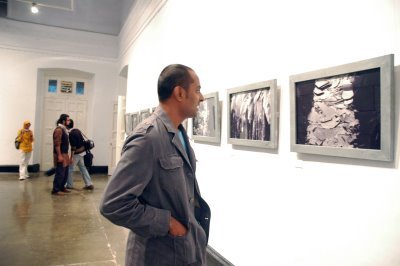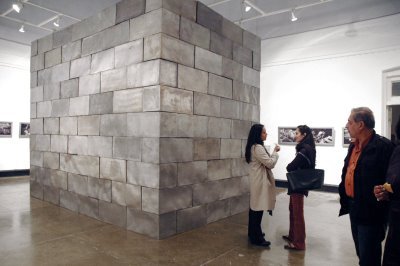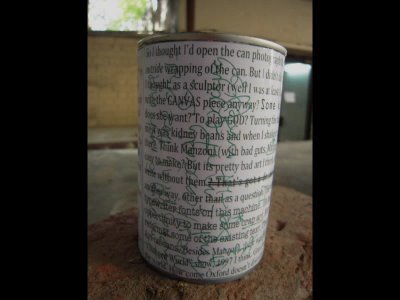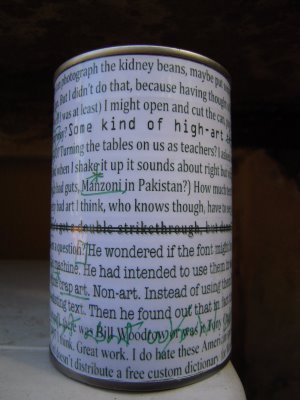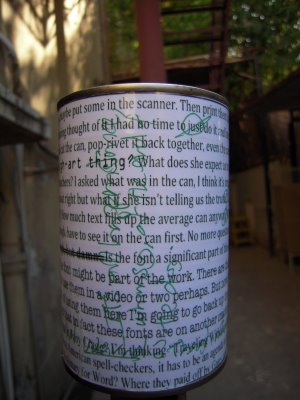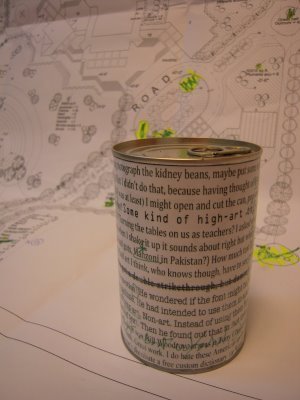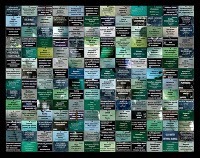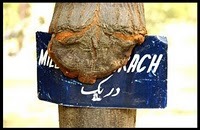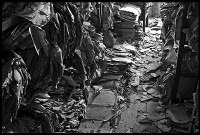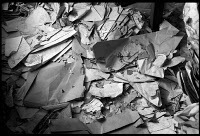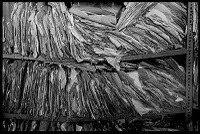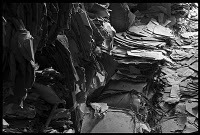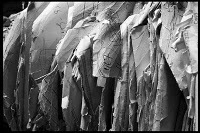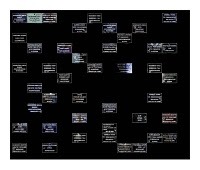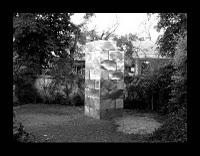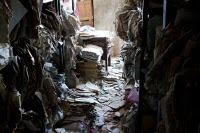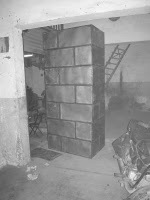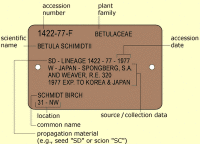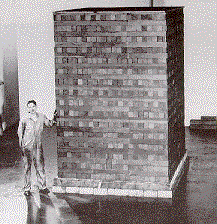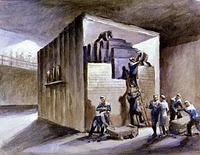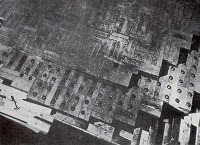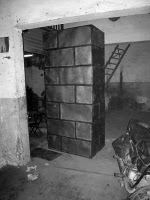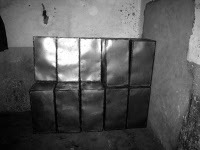‘Half-Life” Video Documentation
“Autobiographical Baked Bean Can” April 2009
Its my contribution to another artists project, “what is your take on art making?” Please do it on a can. She told me it was a can of kidney beans but I know someone who opened one and it was Baked Beans. That completely changes it for me. Though it all means something else in Pakistan, different associations entirely. The point was that I did it autobiographically. Even the corrections of the text refers to my work as a teacher.
Other autobiographical works April 2009
“Half-Life” NCA Gallery Show, 16th Feb. 2009
New Work by David Alesworth and Huma Mulji
Two person show at Zahoor ul Akhlaq Gallery,
National College of Arts,
Lahore.
February 16th-4th March 2009
Botanical accession labels, Lahore and Austria.
30 x 40 inch, archival C-, Edition 1/6, 2009.
(Bachain)
NCA Show
“All the Names”
(detail, in progress)
Botanical accession labels grid.
30 x40 inches.
30 units of 180 units (in progress)
Mild-steel, zinc plate, units 14 x14 x28 inches.
“Half-Life”
“Base of the World, Magic Base No. 3 by Piero Manzoni 1961 Homage to Galileo.”
The world as sculpture.
Mona Hatoum, “Socle du Monde” 1992-1993
Wooden structure, steel plates, magnets and iron fillings
64 5/8 x 78 3/4 x 78 3/4 in. (164 x 200 x 200 cm)
Photo: Edward Woodman
Besides a tribute to Manzoni’s sculpture by the same name of 1961, Hatoum says like the black stone of the Kaaba, thirty years of wars and deceits have turned Manzoni’s pure work black with the sins of man.
“12.2.42”
I see “12.2.42” as part tribute (to scientific endeavor) and part warning (of the imperfect nature of mankind’s knowledge). The smallness of mankind’s achievements set against the vastness of creation. The ultimate failure of all technologies and even civilization itself. It is a Vanitas sculpture. It critiques the arrogance of scientific knowledge. I half suspect this world will be sucked through the eye of an atom sized black-hole, produced in the new Cern accelerator. What a suitable end it would be for this planet, wrecked as it is, by mankind’s insatiable greed.
“A Taxonomy of Eden”
“Now the LORD God had planted a garden in the east, in <st1:city><st1:place>Eden</st1:place></st1:city>; and there he put the man he had formed. And the LORD God made all kinds of trees grow out of the ground trees that were pleasing to the eye and good for food. In the middle of the garden were the tree of life and the tree of the knowledge of good and evil.”<o:p></o:p>
Genesis 2:8 9
In the Bible, God tells the man to name the animals (Genesis <st1:time minute=”19″ hour=”14″>2:19</st1:time>). In the Qur’an, Allah teaches Adam the names “of all things” and Adam repeats them (Ta-ha 20:120).
els for Eden, having learnt of all the names of the plants from God. Unfortunately many of these names are embedded with tales of Empire, the names of Victorian naturalists, indigenous names latinized and other slight problems in the overall scheme of things. I was thinking I might add zoological names plates for the reptilian and mammalian inhabitants of Eden, at least a few key characters. This is still under consideration. Finding convincing and possible names for the plants of Eden is a longer task. I’ve started researching Quaranic and biblical references, but they then need re-translating into botanical Latin, it’s going to take some time. I will then commission engraved labels, which I will in turn photograph. I am hoping to do one garden work for the NCA show, by 14th. February 2009. This will be a grid of botanical labels, in place of a garden. “All the Names” (re. Samarago’s book) or “The Naming of Names” (re. Anna Parvord’s book) may be title options. This will work alongside the file (Record Room) images. I will combine photographs of botanical labels from multiple locations, the regional languages also impinge in this supposedly international language of science. The labels are grey and the assemblage feels like a mausoleum. This also serves as a pointer to environmental issues, as so many plant names may survive the species (in the wild) in many cases.
NCA Show references.
CP-1
1942
The idea that CP-1 was built in a university squash court has always appealed to me.
(Chicago Pile-1) This appears to be a stack of graphite blocks from the core prior to assembly.